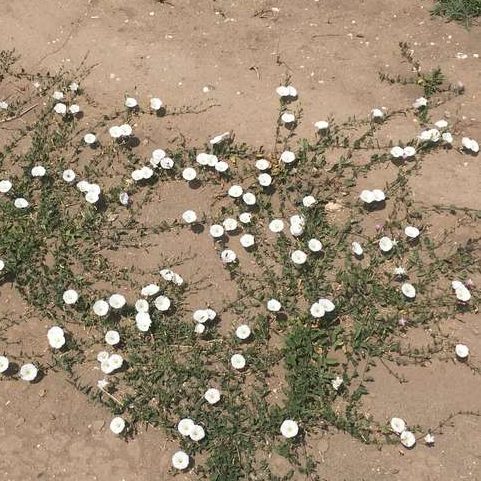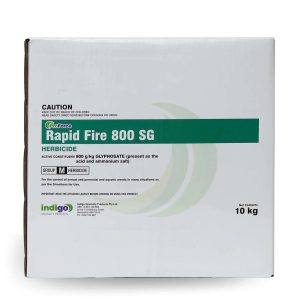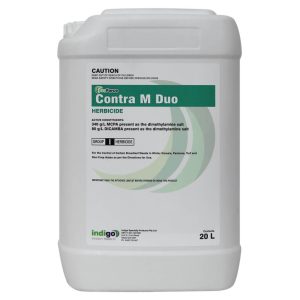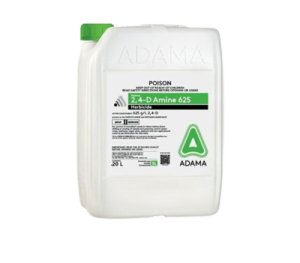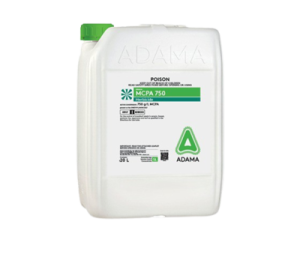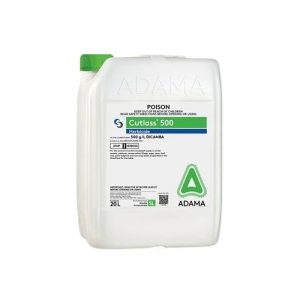Field Bindweed (Convolvulus arvensis)
Field Bindweed is a long lived perennial vine that is also known as Morning Glory. Morning Glory has creeping stems and is prostrate until it comes into contact with other plants or barriers. Then it starts to climb.
After you read this, you will be able to:
- Identify Field Bindweed or Morning Glory.
- Know the habitat of Bindweed.
- Know the best options to control Morning Glory.
Thanks to The Living Atlas of Australia for the distribution map.
Why is Field Bindweed a Problem Weed?
- Bindweed climbs and chokes out other plants.
- It has a large system of rhizomes that grow deep into the soil, and its taproot grows to a depth of 3 metres. This efficient root system reduces soil moisture to below the wilt point of other plants.
- It is aggressive and competes with plants for sunlight, and nutrients. In agriculture it reduces yields by to 50%.
- Field Bindweed re-shoots if the shoot is damaged.
- It is difficult to control with herbicides.
- The seeds of Bindweed stay viable in the guts of birds for over 100 hours. This means it can disperse over long distances.
- Bindweed is suspected of being toxic to livestock.
- It is a host for nematodes including the root knot nematode.
Morning Glory flowers are light-sensitive, and they close up at night and on cloudy days. This is called nyctinasty. and you can also see this happen in Gazania and Wood Sorrel.
Field Bindweed is a good indicator of low-fertility soils. that are low in Ca and P or under drought stress. It also indicates an excess of K.
More on turf weeds is in our weed ID chart. If you need any help with weed ID feel free to contact our turf agronomist.
How to Identify Field Bindweed.
Reproduction of Field Bindweed.
- Field Bindweed reproduces vegetatively from roots, rhizomes, and small stem fragments. It spreads 2 to 3 metres over a growing season.
- An average plant produces over 500 seeds, and these lie dormant for up to 20 years. The seeds of Field Bindweed become waterproof after a month.
- Seeds germinate anytime between the early Spring and the late Autumn, but most Field Bindweed seeds germinate by the early Summer. Once daytime temperatures reach 14°C seedlings start to appear.
Seed longevity: The seeds are viable for more than 5 years.
Germination depth: Field Bindweed germinates at a depth of 6 to 7 cm.
Seeds/flower: There are 1 to 4 seeds per flower.
Seeds/plant: Field Bindweed produces around 500 to 550 seeds per plant.
- If you scarify and damage the seed coat, it causes 100% of the seed to germinate. This contrasts with a germination rate of only 5 to 25% for fresh Field Bindweed seeds. These seeds spread by animals, water and human activity.
- Bindweed regrows from taproot material and seedlings during the Autumn to Spring.
How to Control Field Bindweed.
Its biology makes Field Bindweed difficult to control. Its main mode of reproduction is via its extensive root network. The laterals develop buds, and each of these is able to sprout into a new vine or a new rhizome. This ability to regenerate makes it so invasive and persistent.
- It only takes 4 weeks from germination to the formation of root buds.
- The seed of Field bindweed seed remains viable for up to 60 years.
- Field bindweed inhibits other plants by exuding allelochemicals.
- It tolerates the allelochemicals that other plants exude.
- Some biotypes of Field Bindweed are naturally resistant to Glyphosate.
Management Calendar for Field Bindweed.
Management Calendar for Field Bindweed | ||||||||||||
Perennial | ||||||||||||
Month | Jan | Feb | Mar | Apr | May | Jun | Jul | Aug | Sep | Oct | Nov | Dec |
Germination | Seeds | Rhizomes | ||||||||||
Active Growth | ||||||||||||
Flowering/Seeding | ||||||||||||
Post Emergent Herbicide | ||||||||||||
Cultural Control of Field Bindweed.
The first step in the cultural control of Field Bindweed is to feed your turf. Field bindweed does not compete well if there is a thick cover of turf grass.
- Apply the right amount of nitrogen.
- Irrigate your turf properly. Make sure you don’t over water.
- Field Bindweed tends to struggle in heavy shade, so maintain your turf at the right height of cut.
- If you try and mow to remove Bindweed, it will not work due to its prostrate growth habit.
- Hand weeding is a waste of time unless the plants are very young, and haven’t had time to develop an extensive root system.
Chemical Control of Field Bindweed.
Selective Pre-emergents do not work on Field Bindweed or Morning Glory.
Post Emergent Control of Field Bindweed.
Autumn applications of selective herbicides that contain 2,4-D and Dicamba give better results vs Field Bindweed. However, you are likely to need several applications to get this weed under control.
- Standalone herbicides like 2,4-D are not the best option to use, as they only tend to suppress this weed. The aim with 2,4-D is to reduce Field Bindweed by 60 to 80% and prevent seeds from establishing. It is important to apply 2,4-D every year, because if you miss an application it gives the Bindweed a chance to recover.
- Dicamba. Control of Bindweed with Dicamba is best when it is actively growing, and in the post bloom stage. You should make a follow-up application in the Spring to control any seedlings. Dicamba is not safe to use on Buffalo grass.
- Contra M. Do not use on Buffalo grass.
- MCPA.
- Quinclorac. This is not registered in Australia for Field Bindweed. Overseas if you spray with this add a methylated seed oil (Voltage MSO). This helps with chemical uptake via the foliage and roots. Any rain or irrigation after application helps with uptake.
Table of Post Emergent Herbicides for Field Bindweed.
Product | Active | Chemical Group | Rate/Ha | Comments | ||||
2,4-D | 2,4-D | 4 | 1.8-3.2 | Wet foliage thoroughly. DO NOT mow lawn for 1 week before and at least 1 weed after application. DO NOT use on Buffalo grass (WA only). | ||||
Contra M. | Dicamba + MCPA | 4 | 6.5 L | Apply in 250-400L water. DO NOT use on Buffalo grass. After use do not mow for 2 days before or after application or fertilize within two weeks. | ||||
Dicamba | Dicamba | 4 | 1.2L + 3.2L of 2,4-D Amine 625g/L | Use a minimum of 1000L/Ha water. Do not spray on Buffalo or Bent Grass. | ||||
MCPA | MCPA | 4 | 930ml -1.8L | Apply in high volume to actively growing weeds. DO NOT mow for 2 days before application. Some transitory damage may occur to fine turf grasses | ||||
Warhead | MCPA + Clopyralid + Diflufenican | 4 + 12 | 5 L | You may see discolouration on kikuyu, carpet grass and Queensland blue. Avoid overlapping. Use an NIS. | ||||
Non Selective Bindweed Control.
You cannot use any of these on lawns or turf areas to selectively remove Bindweed.
- Glufosinate-ammonium provides control for 4 to 6 weeks, but it regrows and recovers due to the limited movement of glufosinate.
- Glyphosate. If you use Glyphosate and water quality is an issue then use ProForce Manta Ray.
You get the best results vs Field Bindweed if you apply Glyphosate from full bloom to the early seed stage of maturity. If you apply this to any regrowth in the Autumn it also provides some control.
The aim is to fully cover the foliage but avoid any spray runoff. You may need to make several treatments to get complete control.
These following are non-selective but also have a long term residual and stop any re-growth of Bindweed from seed.
- Renegade. Renegade stops germination of Bindweed for up to 12 months. This reduces the need for multiple herbicide applications.
- Numchuk Quad. This gives post and pre emergent control for up to 12 months.
- Cortex Duo. Cortex Duo gives a rapid knockdown of Field Bindweed, and residual control for up to 3 months. It is also safe to use around trees.
Table of Non Selective Herbicides for Field Bindweed.
Product | Active Ingredient | Group | Use Rate/Ha |
Glufosinate 200 | Glufosinate-ammonium | 10 | 1 to 6 L |
Rapid Fire 800 | Glyphosate | 9 | 0.9 to 1.35 Kg |
Numchuk Quad | Terbuthylazine + Glyphosate + Amitrole Oxyfluorfen | 5 + 9 + 34 + 14 | 20 to 25 L |
Cortex Duo | Nonanoic Acid + Oxyfluorfen | 14 | 7 L/1000L |
Renegade | Bromacil | 5 | 3.5 to 6.5 Kg |

